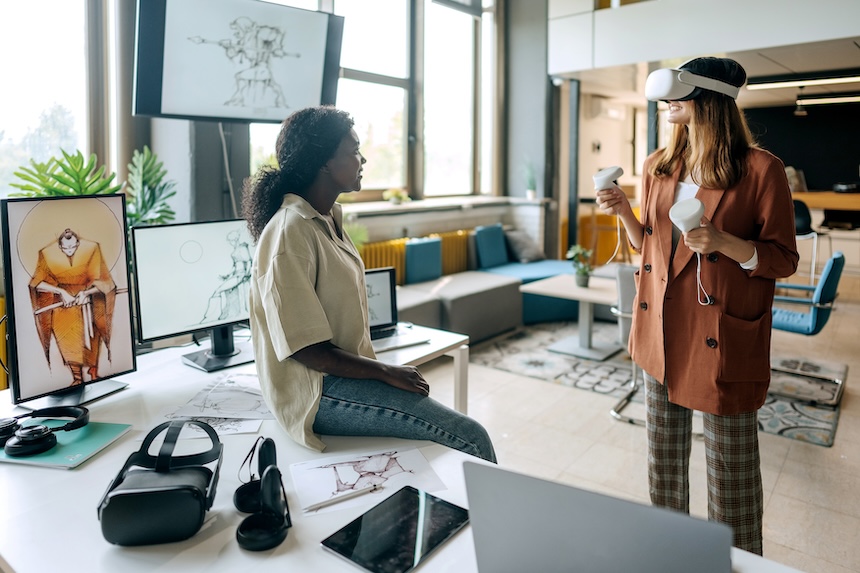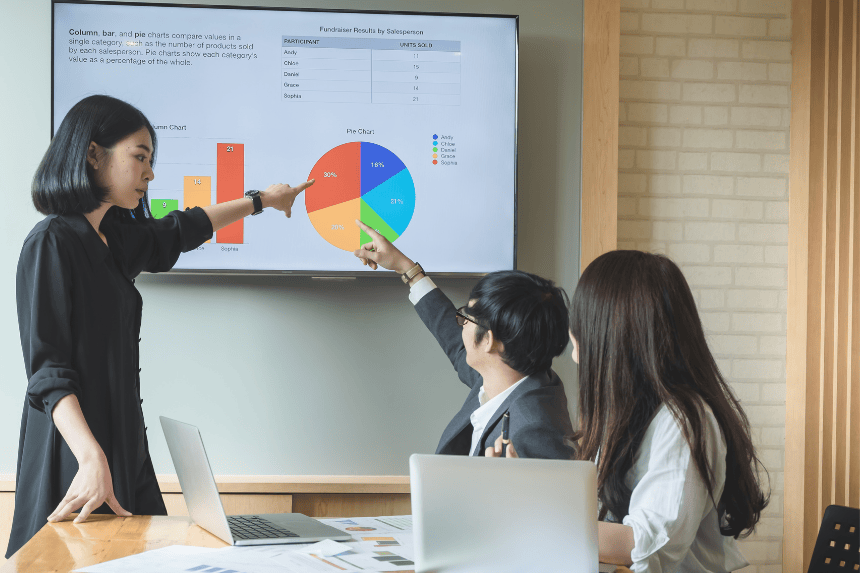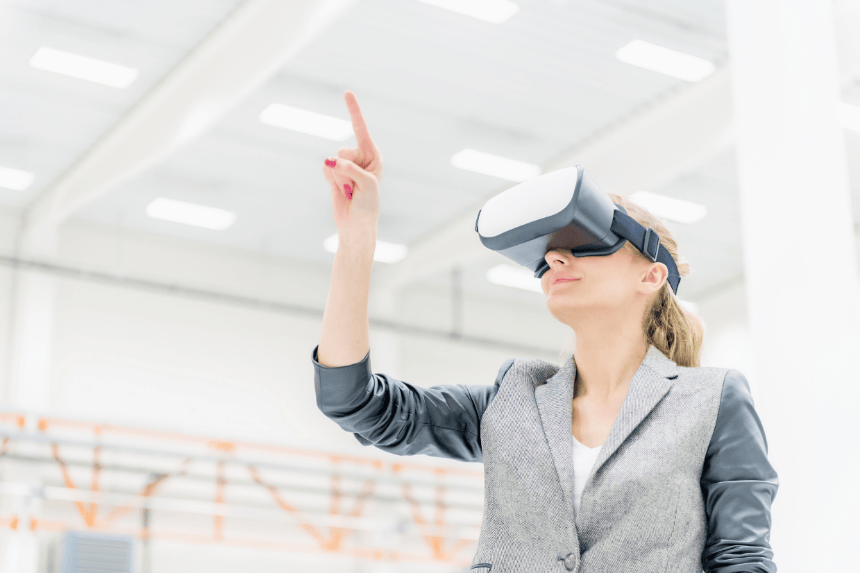
L&D is poised for an exciting transformation in 2025. With technological advancements accelerating and a multigenerational workforce bringing diverse perspectives, organizations have unparalleled opportunities to innovate and elevate their training strategies. Modern trends in eLearning present the chance to address skill gaps, foster deeper engagement, and build agile, future-ready teams.
The Power of 10 Framework: Driving Modernization in eLearning
The Power of 10 Framework, designed by EI, is a strategic blueprint designed to help organizations modernize their learning content and stay ahead in the rapidly evolving eLearning landscape. Centered on ten transformative trends, the framework empowers L&D teams to deliver hyper-personalized, scalable, and inclusive learning experiences that drive engagement and measurable business outcomes.
From AI-driven content creation to immersive learning technologies and adaptive learning ecosystems, the Power of 10 Framework integrates cutting-edge tools and approaches to address skill gaps, enhance learner engagement, and align training with organizational goals. It provides a structured pathway for organizations to harness innovative trends, ensuring their learning programs remain relevant and impactful.
By adopting this framework, L&D leaders can future-proof their workforce, foster a culture of continuous learning, and unlock the full potential of their training initiatives in 2025 and beyond.
The Top 10 Trends Shaping eLearning in 2025
- AI-Driven Content Development
AI tools will redefine content creation, enabling rapid development and hyper-personalized learning experiences:
- Dynamic Content Generation: AI will automate the creation of quizzes, simulations, and microlearning modules, significantly reducing development time.
- Hyper-Personalization: AI will tailor learning paths based on individual performance, preferences, and goals, ensuring higher engagement and impact.
- Predictive Learning Analytics: AI-driven insights will predict learner needs, enabling proactive content adjustments and improved learning outcomes.
- NexGen Microlearning
Microlearning will evolve into a precision-targeted approach, catering to specific learner needs:
- Skill-Focused Nuggets: Task-specific modules will address real-time skill gaps.
- Scenario-Rich Interactions: Short, interactive scenarios will enhance application and decision-making skills.
- Nano-Learning Push Notifications: Mobile alerts will deliver concise learning moments to reinforce knowledge.
- NexGen Gamification
Gamification strategies will focus on fostering deeper engagement and inclusivity:
- Meta-Learning Games: Short games will combine skill-building with reflection, encouraging long-term learning retention.
- Gamified Adaptive Paths: AI-powered gamification will customize challenges based on individual performance levels.
- Universal Design for Gamification: Games will be designed to include cultural nuances and accessibility features for global learners.
- Blended Learning 3.0
Blended learning models will adapt to hybrid and flexible workplace needs:
- Dynamic Blended Models: Seamless integration of synchronous, asynchronous, and experiential learning will offer tailored hybrid experiences.
- Augmented Immersion: Augmented reality and gamified elements will enhance blended learning tracks, making them more engaging and interactive.
- Immersive Content Creation
Immersive technologies will dominate experiential learning in 2025:
- Multi-Sensory Simulations: VR and AR will combine with haptics for realistic, tactile training experiences.
- On-Demand Immersion: Gearless simulations will enable learners to access advanced experiences from any device.
- 360° Learning Environments: Interactive virtual spaces will create hyper-real settings for advanced simulations.
- Accessibility and Inclusion
Inclusivity will become a cornerstone of content design:
- Equity-Driven Content Design: Content will be designed to reflect cultural, regional, physical, and linguistic diversity.
- AI-Assisted Accessibility: Real-time captions, translations, and voice-to-text features will make learning universally accessible.
- Inclusive Narratives: Scenarios and examples will eliminate bias, ensuring global resonance.
- EdTech Evolution
EdTech will drive innovation and scalability in content development:
- Intelligent Content Platforms: Platforms will use AI to recommend, update, and curate content in real time.
- Cloud-Based Content Hubs: Centralized platforms will enable seamless collaboration and updates for global teams.
- Extended Reality (XR): XR technologies will merge VR, AR, and MR for advanced collaborative learning experiences.
- Data-Driven Content Refinement
Data insights will enable continuous content optimization:
- Behavioral Analytics: Engagement heatmaps will inform content refinement and delivery strategies.
- Impact Alignment: Content will align with KPIs and business goals, ensuring relevance and ROI.
- Social and Collaborative Learning
Social learning will foster collective growth and engagement:
- Crowdsourced Learning Content: Peer-generated insights will enrich training modules with diverse perspectives.
- Collaborative Gamified Challenges: Team-based activities will enhance group problem-solving skills.
- Embedded Social Ecosystems: Forums, real-time Q&A, and polls will make content more interactive and engaging.
- Adaptive Learning Ecosystems
- AI-Powered Skill Mapping: Systems will dynamically identify skill gaps and recommend tailored learning paths to address individual and team needs.
- Continuous Learning Journeys: Platforms will enable seamless progression through personalized microlearning, formal training, and experiential activities.
- Contextualized Learning: Adaptive tools will provide real-time resources based on employees’ roles, projects, and immediate challenges, ensuring relevance and efficiency.
Conclusion
As workforce demands evolve and technology continues to advance, the need for modern, learner-centric training solutions has never been more urgent. The trends shaping eLearning in 2025—ranging from AI-driven personalization to immersive learning and data-driven content optimization—are not mere innovations; they are necessities for businesses to stay competitive and relevant.
By embracing the strategies outlined in the “Power of 10 Framework,” organizations can bridge skill gaps, foster engagement, and align learning programs with measurable business outcomes. These efforts will not only future-proof their workforce but also cultivate a culture of continuous learning and innovation.
Now is the time to act. Assess your current L&D strategies, identify opportunities for transformation, and leverage these emerging trends to create a learning ecosystem that drives agility, inclusivity, and long-term success.



